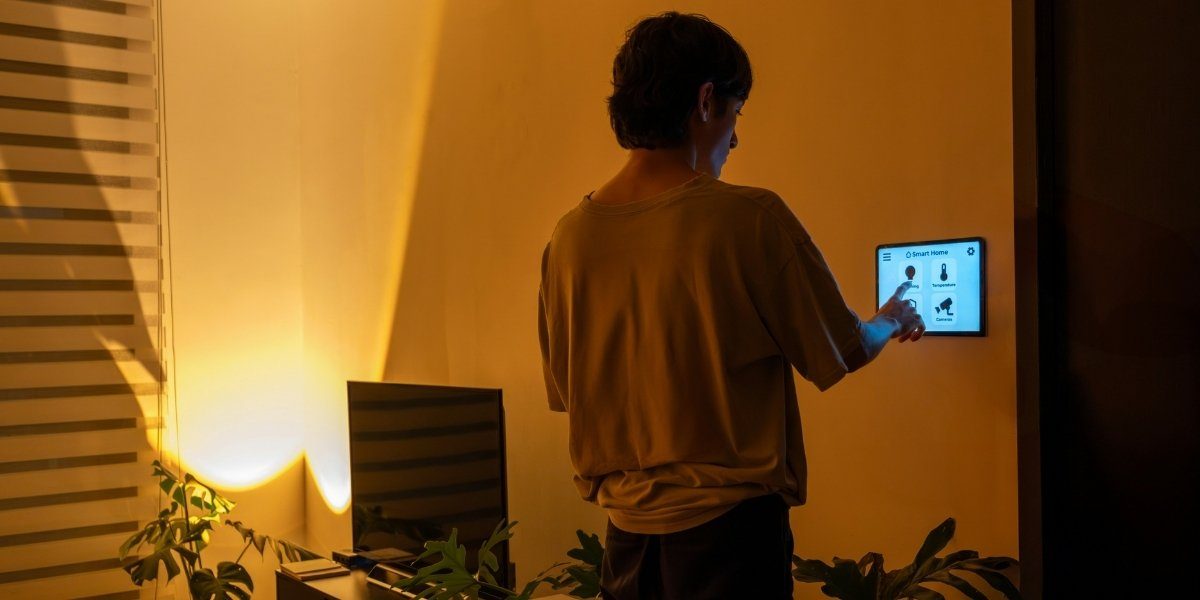Smart home technology is becoming a common feature in many households, with an increasing number of families choosing to invest in smart devices for home safety. These devices, ranging from security cameras and smart alarms to environmental sensors, offer a new level of convenience and control, all while improving overall home protection. As families look for ways to enhance their security, it’s clear that these devices offer significant benefits, making them a worthwhile investment for many households.
Read also: Exploring the Future of Smart Devices and Gadgets
How Do Smart Home Devices Enhance Family Safety?
The primary reason families are turning to smart home devices is the enhanced security they provide. Unlike traditional security systems, which often require a manual response or constant monitoring, smart devices are designed to offer real-time alerts and automated functions that help families stay ahead of potential threats. Whether it’s a motion detector, security camera, or smoke alarm, these devices help ensure that the home is monitored at all times, giving families peace of mind knowing their property is being protected 24/7.
For instance, smart security cameras can be placed at entry points, allowing homeowners to see who is at their door or monitor the surroundings of their home, all from their smartphone. This feature is particularly helpful when families are away on vacation or simply at work, as it allows them to stay connected to their home environment. Some systems even offer two-way audio, so homeowners can interact with visitors or intruders, providing an extra layer of safety.
Additionally, motion detectors connected to alarms can immediately notify homeowners of suspicious activity. These systems help to respond quickly to potential threats, whether it’s an attempted break-in or an intruder moving around the property. With these devices in place, families can rest assured that their home is under constant surveillance, even if they’re not physically there.
What Are the Benefits of Real-Time Alerts and Remote Monitoring?
One of the main advantages of smart home safety devices is their ability to send real-time alerts to homeowners, no matter where they are. Whether on vacation, at work, or running errands, family members can receive instant notifications on their smartphones or tablets when an event triggers a smart device. For example, a doorbell camera can send an alert when someone rings the doorbell, and a motion sensor can notify homeowners if there is movement around the perimeter of their property.
These alerts help homeowners stay informed and in control of their home security, even when they’re not physically present. Families can monitor their home environment, assess the situation, and take immediate action if necessary. The ability to monitor security cameras remotely, check on the status of an alarm, or lock doors from anywhere adds a layer of convenience, allowing homeowners to address any security concerns without being at home.
In addition to security, remote monitoring can help families track other aspects of their home environment, such as energy use, temperature, or air quality. For example, a smart thermostat allows homeowners to adjust the temperature remotely, ensuring that the house is comfortable upon arrival. Similarly, environmental sensors can provide alerts for issues like water leaks or carbon monoxide buildup, helping families prevent damage or avoid dangerous situations.
How Do Smart Devices Help Prevent Home Break-ins?
Home break-ins are a common concern for many families, and smart devices offer a way to significantly reduce the likelihood of such incidents. The combination of security cameras, motion sensors, smart locks, and alarm systems creates a multi-layered security approach that can deter potential intruders.
Smart security cameras are often equipped with features such as night vision, motion tracking, and high-definition video quality, providing clear surveillance footage even in low-light conditions. These cameras can record suspicious activity and send alerts to the homeowner, who can then assess the situation and contact authorities if necessary. The visibility of these cameras alone can often deter burglars from attempting to break into a home, as the risk of being caught on camera is a significant deterrent.
Motion sensors further enhance home security by detecting movement near entry points such as doors and windows. These sensors can be integrated with an alarm system, causing an alert to go off when an intruder is detected. This not only draws attention to the break-in attempt but also warns the homeowner of the security breach in real time.
Additionally, smart locks provide a more secure and convenient way to manage access to the home. Families can control who enters their home and when, whether it’s through a smartphone app, voice command, or key code. This level of control adds a layer of security that can prevent unauthorized access, even if the family is not physically present to secure the doors.
Read also: Voice Assistants: The Future of Smart Home Automation?
Why Are Smart Devices Important for Fire and Carbon Monoxide Detection?
While security is a major concern for families, safety goes beyond protecting the home from break-ins. Fire and carbon monoxide detection are critical aspects of home safety, and smart devices can enhance the ability to respond quickly in these situations.
Smart smoke detectors offer several advantages over traditional models. They can send real-time alerts to homeowners when smoke or fire is detected, allowing them to take immediate action, whether it’s evacuating the home, contacting emergency services, or instructing someone nearby to assist. This is particularly beneficial for families who are away from home, as they can be alerted to a potential fire even when they are not there.
In addition to smoke detectors, smart carbon monoxide detectors are an essential addition to many homes. Carbon monoxide is an invisible, odorless gas that can be dangerous, even lethal, if not detected. Smart carbon monoxide detectors can provide early warnings and send alerts to homeowners if dangerous levels of the gas are detected. These devices offer an extra layer of protection, especially in households that use gas-powered appliances, such as stoves or water heaters, which can be sources of carbon monoxide buildup.
Smart home systems can integrate these safety devices with other home automation features. For example, in the event of a fire, the system might unlock doors to make it easier to exit the home or activate lights to guide family members safely through the house. These automatic responses can help mitigate the risk during an emergency, making it easier for families to evacuate quickly and safely.
How Do Smart Devices Improve Family Convenience and Peace of Mind?
While security and safety are the primary reasons for investing in smart home devices, they also contribute to overall convenience and peace of mind. Many of these devices are designed to make daily tasks easier, from controlling the temperature and lighting to managing household devices.
Smart thermostats, for instance, allow families to adjust the temperature of their home from a distance, ensuring comfort without wasting energy. This is particularly useful in households where schedules are unpredictable or for families who travel often. Similarly, smart lighting systems can be programmed to turn on and off at specific times, which not only enhances convenience but also creates the appearance of an occupied home, adding an extra layer of security when family members are away.
In addition to these practical functions, smart devices provide peace of mind by offering constant monitoring and control. The ability to remotely check on security cameras, lock doors, or receive alerts about environmental changes allows families to stay connected to their home no matter where they are. This continuous monitoring helps to prevent problems before they escalate, whether it’s a broken appliance, an attempted break-in, or an environmental hazard.
Families who invest in smart home safety devices can experience a sense of security and control over their living environment. These devices help manage home safety and provide a more convenient and connected lifestyle. By integrating technology into their homes, families can create safer, more efficient living spaces, ultimately improving both security and everyday comfort.
As smart technology continues to evolve, it is likely that more families will adopt these systems for the enhanced safety and convenience they offer. With the ability to monitor and control home security, environmental conditions, and daily tasks, smart home devices offer a comprehensive solution to modern family needs.







